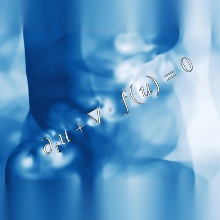Directly to
Team
Principal Investigators:
- Jörg Schumacher,
Technical University of Ilmenau, Department of Mechanical Engineering - László Székelyhidi,
Max Planck Institute for Mathematics in the Sciences, Applied Analysis
Project staff:
-
Georgy Zinchenko (TU Ilmenau)
-
Xi-Yuan Yin (MPIMiS Leipzig)
Webpages:
Abstract
Fundamental aspects of the universality of statistical properties at the small scales in high-Reynolds-number fluid turbulence have been mostly studied for the incompressible case and similar efforts for the fully compressible regime have been started only recently. One reason for this circumstance is that further dimensionless parameters have to be included next to the (Taylor microscale) Reynolds number . A recent comparison of a comprehensive record of direct numerical simulation (DNS) data suggests that not only the turbulent Mach number next to , but also the ratio of dilatational to solenoidal root mean square (rms) velocities, , have to be included. On the other hand, a scale-by-scale energy balance, analogous to work of Duchon and Robert for the incompressible case, reveals two distinct possible cascade mechanisms called deformation and baropycnal work, which may be responsible for the dissipative anomaly in compressible turbulence.
The basic premise of this proposal is that further progress in compressible turbulence requires the study of these mechanisms in detail and their dependencies on and . Whilst deformation work is closely related to the incompressible case and the classical conjecture of Onsager and is expected to dominate in the anelastic regime, the dilatation-dominated regime is so far completely unexplored. The present project aims at extending the currently available Onsager-theory of weak solutions to the compressible Euler equation system in the entire parameter plane in a unifying manner. Key milestone problems on the mathematical side include the generic non-uniqueness of admissible weak solutions, the construction of weak solutions in Onsager-critical Besov spaces as well as the mathematical foundations of a geometric theory of extreme dissipation events. The key milestone problem on the fluid mechanical side is the scale-dependent numerical analysis of deformation and baropycnal work in relation with energy dissipation events in fully developed compressible turbulence.
Reaching these scientific objectives requires consequently a joint effort of mathematical and basic fluid mechanical investigations that brings together analytical calculations, constructive proof techniques of convex integration, direct numerical simulations, and statistical and geometrical analysis for compressible turbulence. Our project addresses in particular the research area A of the Priority Programme, focusing on the analytical and numerical study of weak entropy solutions and their relevance for the small-scale intermittency in compressible Navier-Stokes turbulence.


